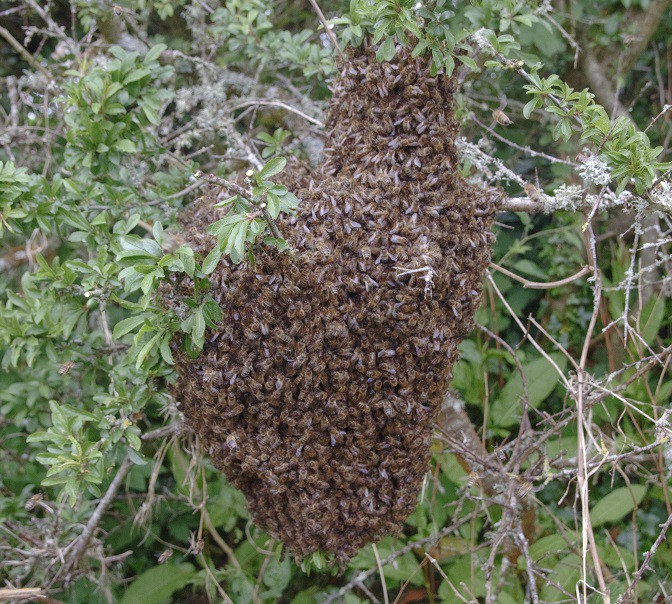Swarming is an important part of the honey bee's reproductive process and one colony can send off many swarms when it's hive has become over crowded or otherwise undesirable. There are many species of bees and this project focuses on the native honey bees in my location, Apis, Mellifera Mellifera. Sadly, these bees are under significant threat from other honey bees such as Italian or Buckfast that are imported by other bee keepers in the belief that they are more productive. However, the local bees have many advantages, one being that they have developed behavioral techniques to combat the pervasive Varroa mite which then means that the hives do not need to be treated with aggressive chemicals. This project aims to produce a fairly simple system to predict the arrival of incoming swarms so that the bee keeper can then go and physically look for the swarms and give them a home. These boxes could be put in a multitude of different locations as long as they are in range of a LoRa gateway and can not only predict the arrival of a swarm but also tell the beekeeper if a swarm has taken up permanent residence in the catch hive.
Bees respire - they breathe in oxygen and breathe out CO2 and this can be measured and used to estimate bee numbers inside a catch hive.
A catch hive is a special box positioned high above the apiary in a location where bees find it attractive to scout for their next home. Scouting activity is often indicative of a swarm being formed somewhere in a 3 mile radius of the box and often eventually results in the arrival of a swarm of at least 1,000 bees. To witness a swarm of bees is one of the most amazing experiences. First, you hear a strange buzzing noise over head which can be quite loud. Next, the sky darkens and a huge cloud of black insects comes slowly towards you. Fortunately, they are normally completely non-aggressive and tend to stay at well above human head level.
Last year, I counted 13 swarms arriving in my own apiary, which is not unusual. It's good to try and catch the swarms as they are valuable to the beekeeper.
PCBs for this project were kindly supplied free by Seeed Studio.
Work tasks:
- Rig LoRa darkStar up to a honey bee catch hive with external pipes to measure CO2 ..... DONE.
- Build online database or CSV file to hold values ....... DONE.
- Build script to rip local weather stats.from the interwebs ...... DONE.
- Collect data - the swarming season is imminent! ........ IN PROGRESS.
- Add CO2 value, swarm boolean and weather details at each time point to database / CSV file. ....... IN PROGRESS.
- Design a machine learning system to train and infer swarming. Will probably use a XGboost classifier, which has worked well in the past. ....... DONE.

The native honey bees, in my region Apis Mellifera Mellifera , are fascinating animals and are one of the few species able to operate true democracies which even the supremely intelligent homo sapiens seem to struggle with. However, unlike humans, they are not capable of inter-colony cooperation but will no doubt still be around long after the humans have become extinct due to their use of strategic nuclear weapons, artificial intelligence or whatever new fangled thing they come up with to destroy themselves.
 Capt. Flatus O'Flaherty ☠
Capt. Flatus O'Flaherty ☠